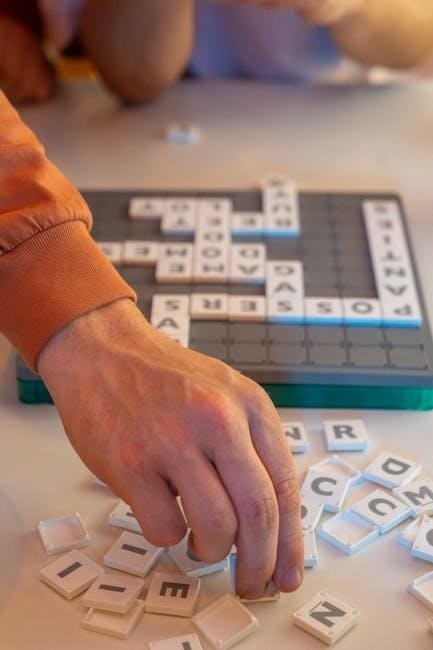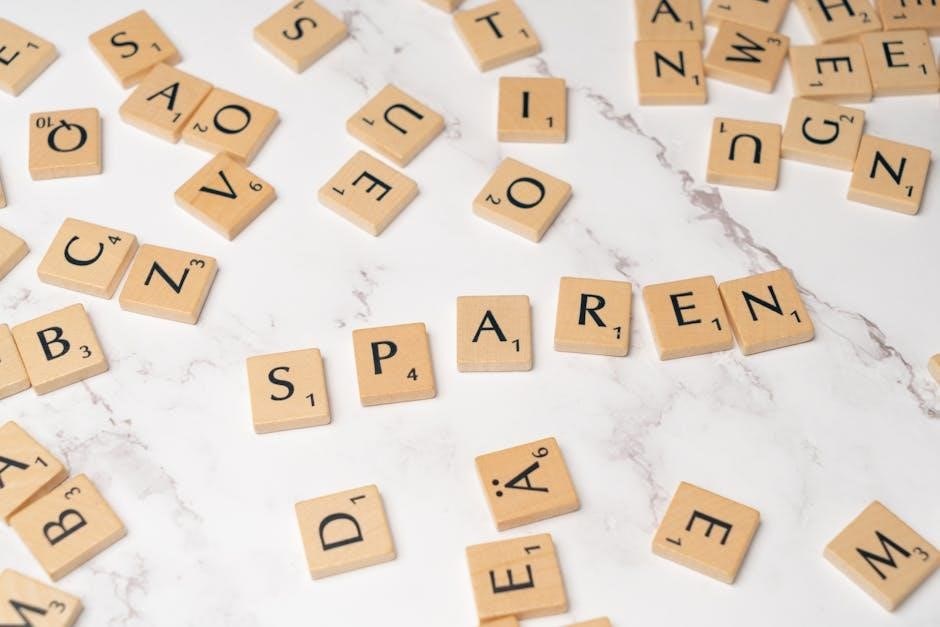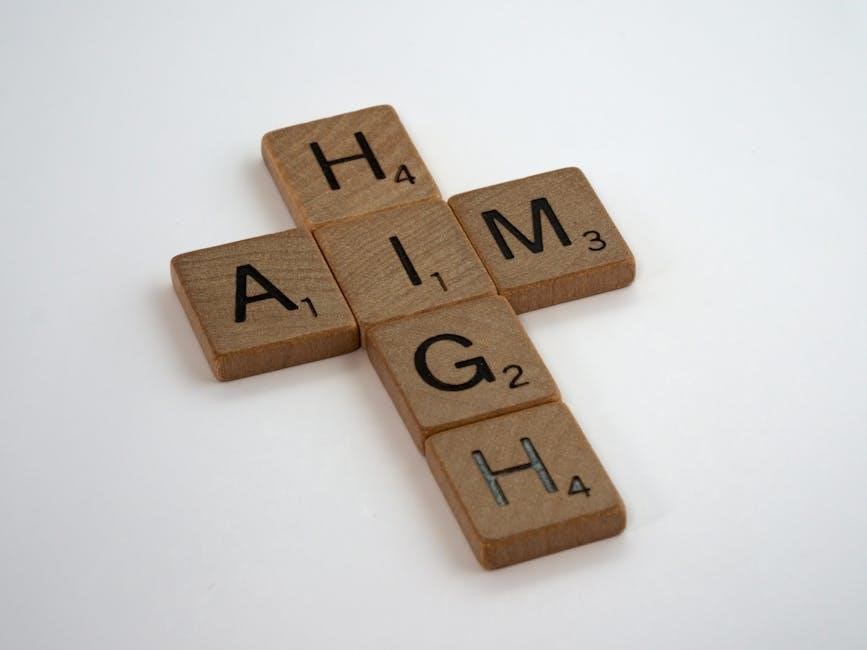Crossword Puzzles for Figurative Language: An Overview (November 25‚ 2025)
Rudolph Academy offers figurative language crossword puzzles‚ alongside quizzes and worksheets for various subjects. Yesenglish provides a shared‚ healthy puzzle‚ while online makers empower educators.
These puzzles‚ like those from English 1 Semester‚ enhance learning and leisure‚ offering a mental workout. The New York Times crossword’s influence is undeniable‚ with increasing digital engagement.
Resources are readily available‚ including printable PDF versions‚ fostering a resurgence in puzzle popularity‚ with over 28 million players enjoying word games daily.
Figurative language crosswords represent a dynamic intersection of linguistic skill and puzzle-solving fun. These aren’t simply vocabulary tests; they demand a deeper understanding of how language works beyond its literal meaning. Resources like those found at Rudolph Academy and shared on platforms like Yesenglish demonstrate a growing trend in utilizing crosswords for educational purposes.

The appeal lies in the challenge of deciphering clues that rely on simile‚ metaphor‚ personification‚ and other devices. Often available as downloadable PDF worksheets‚ these puzzles cater to diverse learning styles. They transform abstract concepts into concrete challenges‚ encouraging students to actively engage with the nuances of language. The format encourages critical thinking and contextual understanding‚ moving beyond rote memorization.
Furthermore‚ the accessibility of online crossword makers allows educators to tailor puzzles to specific curriculum needs‚ fostering a more personalized learning experience. This blend of traditional puzzle format and modern educational tools makes figurative language crosswords a valuable asset.
The Benefits of Using Crosswords for Language Learning
Employing crossword puzzles – often accessible as convenient PDF downloads from resources like Rudolph Academy and Yesenglish – offers significant advantages in language acquisition. They actively reinforce understanding of figurative language‚ moving beyond simple definition recall to application within context. This active recall strengthens neural pathways‚ improving retention.
Crosswords promote vocabulary expansion‚ not just of the figurative devices themselves (metaphor‚ simile‚ etc.)‚ but also of related terms. The puzzle format encourages analytical thinking as solvers must dissect clues and consider multiple possibilities. This process sharpens critical reading skills and enhances comprehension.
Moreover‚ the engaging nature of puzzles fosters motivation and makes learning enjoyable. The sense of accomplishment upon completion boosts confidence and encourages continued exploration of language; The digital accessibility further broadens reach and allows for customized learning experiences.

Types of Figurative Language Featured in Puzzles
Crossword puzzles‚ often found as PDFs‚ commonly test simile‚ metaphor‚ personification‚ hyperbole‚ and idioms. Onomatopoeia and alliteration also appear‚ challenging solvers’ linguistic skills.
Simile and Metaphor Crossword Clues
Simile and metaphor clues frequently appear in figurative language crossword puzzles‚ often available as downloadable PDF worksheets. Clues for similes typically involve comparisons using “like” or “as‚” prompting solvers to identify the comparative phrase. For example‚ a clue like “As brave as a lion” directly leads to the answer “SIMILE”.
Metaphor clues‚ however‚ present implied comparisons‚ requiring a more abstract understanding. A clue such as “Time is a thief” challenges solvers to recognize the non-literal association‚ resulting in the answer “METAPHOR”. Puzzle creators often utilize vivid imagery and relatable concepts to construct these clues‚ enhancing engagement.
Effective clues avoid overly simplistic wording‚ instead opting for nuanced phrasing that tests comprehension. Difficulty can be adjusted by varying the obscurity of the comparison or the length of the answer. These devices are foundational to understanding figurative speech.
Personification in Crossword Puzzles
Personification presents unique challenges – and opportunities – within figurative language crossword puzzles‚ often found as readily available PDF resources. Clues center around attributing human qualities to inanimate objects or abstract concepts. These clues demand solvers recognize the non-literal assignment of actions or emotions.
A typical clue might describe “The wind whispered secrets‚” leading to the answer “PERSONIFICATION”. Puzzle designers frequently employ verbs associated with human behavior to signal this device. Successfully navigating these clues requires identifying the instance where something non-human is given human characteristics.
Crafting effective personification clues involves balancing creativity with clarity. Ambiguous phrasing can increase difficulty‚ while overly direct clues diminish the puzzle’s intellectual appeal. These puzzles reinforce understanding of this key literary technique.
Hyperbole and Understatement Challenges
Hyperbole and understatement‚ as figurative language devices‚ pose distinct challenges when incorporated into crossword puzzles‚ often distributed as PDF worksheets. Hyperbolic clues require solvers to identify exaggerated statements not meant to be taken literally. Clues like “I’m so hungry I could eat a horse” test recognition of extreme overstatement.
Conversely‚ understatement clues present the opposite – deliberately minimizing something for effect. Recognizing this subtlety demands careful reading and an understanding of context. A clue such as “It’s a bit chilly” to describe a blizzard exemplifies this.
Puzzle creators must carefully calibrate the degree of exaggeration or minimization to avoid ambiguity. Effective clues balance cleverness with fairness‚ ensuring solvers can deduce the answer through logical reasoning and knowledge of these figures of speech.
Idioms and Their Crossword Representations
Idioms‚ with their non-literal meanings‚ present a unique challenge – and opportunity – for crossword puzzle design‚ often found in downloadable PDF formats. Successfully crafting clues requires moving beyond dictionary definitions and focusing on the phrase’s established figurative sense. For example‚ a clue like “Break a leg!” wouldn’t seek a literal interpretation of fractured limbs.
Puzzle creators often employ definitions that hint at the idiom’s meaning without explicitly stating it. Clues might describe a situation where the idiom would be used‚ prompting solvers to recall the complete phrase.
The difficulty lies in balancing familiarity and obscurity; common idioms are accessible‚ while rarer ones offer a greater challenge. Effective idiom clues test not just vocabulary‚ but also cultural understanding and the ability to think figuratively.
Onomatopoeia and Alliteration in Puzzle Design
Incorporating onomatopoeia and alliteration into figurative language crosswords – often available as PDF downloads – adds a playful dimension. Onomatopoeic words‚ mimicking sounds (“buzz‚” “hiss‚” “splash”)‚ can be directly used as answers‚ with clues referencing the sound itself. This offers a relatively straightforward‚ yet satisfying‚ solve.
Alliteration‚ the repetition of initial consonant sounds‚ presents a more subtle challenge. Clues can employ alliteration to hint at the answer‚ or the answer itself might be an example of alliterative phrasing.
Puzzle designers must ensure these devices don’t become overly simplistic; Clever clues should still require thought‚ even when dealing with sound-based or repetitive language. The goal is to enhance engagement‚ not to provide easy wins.

Resources for Figurative Language Crossword Puzzles
Rudolph Academy provides PDF puzzles‚ while Yesenglish shares worksheets. Online makers empower educators to create custom crosswords‚ enhancing figurative language learning.
Rudolph Academy Resource Library Puzzles
Rudolph Academy’s Resource Library stands as a valuable hub for educators and students seeking engaging materials to reinforce language arts concepts. Specifically‚ their collection of figurative language crossword puzzles offers a dynamic alternative to traditional worksheets and textbook exercises. These puzzles‚ often available as downloadable PDF files‚ cover a comprehensive range of devices‚ including similes‚ metaphors‚ personification‚ hyperbole‚ and idioms.
The puzzles are designed with varying difficulty levels‚ catering to diverse learning needs and grade levels. Rudolph Academy also provides accompanying quizzes and worksheets‚ creating a cohesive learning experience. The accessibility of these resources‚ particularly the PDF format‚ allows for easy printing and integration into classroom activities or independent study sessions. Teachers can utilize these puzzles for review‚ assessment‚ or simply as a fun and interactive way to practice identifying and understanding figurative language.
Online Crossword Puzzle Makers for Educators
For educators seeking customized learning tools‚ numerous online crossword puzzle makers offer a flexible solution for creating figurative language exercises. These platforms empower teachers to design puzzles tailored to specific vocabulary lists and learning objectives‚ often with the option to export as a PDF for easy distribution. Several user-friendly options exist‚ allowing for quick puzzle generation without requiring advanced technical skills.
These tools typically feature intuitive interfaces where educators can input terms and clues‚ adjusting grid size and complexity as needed. The ability to create custom puzzles is particularly beneficial when focusing on specific figurative devices or literary texts. Furthermore‚ many platforms offer options for sharing puzzles online or embedding them into learning management systems. This facilitates interactive learning and provides students with immediate feedback‚ enhancing comprehension of figurative language concepts.
Worksheet Sharing Platforms (e.g.‚ Yesenglish)
Worksheet sharing platforms‚ such as Yesenglish‚ provide educators with access to a wealth of pre-made resources‚ including crossword puzzles focused on figurative language. These platforms often host user-submitted content‚ offering a diverse range of puzzles suitable for various grade levels and learning styles. Many resources are available as downloadable PDF files‚ simplifying integration into lesson plans and classroom activities.
Yesenglish‚ for example‚ currently features a “Healthy puzzle!” and other shared worksheets‚ demonstrating the collaborative nature of these platforms. Educators can benefit from the time saved by utilizing existing puzzles‚ while also contributing their own creations to the community. These platforms foster a dynamic learning environment‚ allowing teachers to share best practices and access innovative teaching materials. The availability of PDF versions ensures compatibility across different devices and operating systems.

Creating Your Own Figurative Language Crossword
Crafting personalized puzzles involves developing clues‚ selecting vocabulary‚ and designing the grid; PDF creation allows easy sharing and printing for enhanced figurative language learning.
Developing Clues for Different Figurative Devices

Crafting effective crossword clues for figurative language requires a nuanced understanding of each device. For similes and metaphors‚ clues should hint at the comparison without explicitly stating it – think “As sly as a…” for FOX. Personification clues might describe an inanimate object performing a human action.
Hyperbole and understatement demand clues that play with exaggeration or minimization. Idioms present a unique challenge; clues should focus on the phrase’s meaning‚ not literal words. Onomatopoeia clues can mimic the sound‚ while alliteration clues might emphasize repeating initial sounds.
Consider creating a PDF version of your puzzle for easy distribution. Vary clue difficulty to cater to different skill levels. Remember‚ a well-crafted clue is both challenging and rewarding‚ encouraging deeper engagement with figurative language concepts.
Choosing Appropriate Vocabulary Levels
Selecting the right vocabulary is crucial when designing figurative language crosswords. Consider your target audience – are you creating a puzzle for high school students‚ or a more general audience? A PDF format allows for easy adaptation to different grade levels.
Avoid overly obscure terms or jargon. Focus on commonly used examples of each device. For younger learners‚ prioritize simpler similes and metaphors. More advanced puzzles can incorporate complex idioms or nuanced personification.
Balance challenge with accessibility. Include a mix of familiar and slightly more challenging words. Providing a word bank can be helpful for beginners. Ensure definitions within clues are clear and concise‚ avoiding further figurative language within the clue itself.
Puzzle Grid Design Considerations
Designing an effective crossword grid requires careful planning‚ especially for a figurative language PDF. Symmetry is aesthetically pleasing and aids solving‚ but isn’t strictly necessary. Prioritize interlocking words to create a cohesive puzzle.
Consider word length and placement. Longer words offer more intersection points‚ increasing difficulty. Avoid isolated sections or “islands” with limited connections. A good grid balances open spaces with densely packed areas.
Utilize crossword puzzle creation software or online tools to assist with grid generation. These tools can help ensure a solvable and balanced layout. Test the puzzle thoroughly before finalizing it‚ checking for ambiguities or overly difficult clues. A clean‚ readable PDF format is essential for user experience.

Solving Strategies for Figurative Language Crosswords

Decoding clues requires identifying the figurative device used. Utilize context clues within the puzzle and consider common PDF examples. Avoid literal interpretations!
Recognizing similes‚ metaphors‚ and idioms is key to success‚ enhancing both vocabulary and analytical skills.
Identifying the Figurative Device in the Clue
Successfully navigating figurative language crosswords hinges on pinpointing the specific device employed within each clue. Is it a direct comparison‚ hinting at a simile? Or a more implied connection‚ suggesting a metaphor? Recognizing idioms – phrases with non-literal meanings – is also crucial. Many PDF resources‚ like those from Rudolph Academy‚ categorize clues by device‚ aiding in identification.
Begin by scanning for keywords often associated with these figures of speech: “like” or “as” for similes‚ verbs of being (“is‚” “are”) for metaphors‚ and familiar phrases for idioms. Don’t immediately seek a literal answer; instead‚ consider how the clue plays with language.
Yesenglish worksheets often present varied examples‚ building this skill. Understanding the nuances of personification‚ hyperbole‚ and onomatopoeia further expands your decoding abilities. A systematic approach – identifying the device first – streamlines the solving process and unlocks the puzzle’s potential.
Using Context Clues to Determine the Answer
Even after identifying the figurative device‚ context clues within the crossword grid and the clue itself are vital. Consider intersecting letters – these provide valuable constraints‚ narrowing down possibilities. A PDF puzzle from Rudolph Academy‚ for example‚ might offer partial words that guide your thinking.
Analyze the clue’s overall theme or subject matter. Does it relate to nature‚ emotions‚ or everyday experiences? This can steer you towards relevant vocabulary. Remember that figurative language often relies on associations and imagery.
Yesenglish worksheets demonstrate how seemingly unrelated clues can share a common thread. Don’t hesitate to try potential answers‚ even if uncertain; the grid’s feedback will confirm or deny your choices. Crossword solving is iterative – use all available information to deduce the most fitting solution.
Common Pitfalls and How to Avoid Them
A frequent error when tackling figurative language crosswords‚ especially those found in PDF format like those from Rudolph Academy‚ is literal interpretation of clues. Remember‚ the answer isn’t the literal meaning‚ but the device itself or its example.
Beware of ambiguous clues; multiple figurative devices might apply. Consider all possibilities before committing. Overlooking intersecting letters is another pitfall – they offer crucial validation. Don’t assume the first answer that comes to mind is correct.
Yesenglish worksheets often highlight tricky wordplay. Be mindful of synonyms and alternative phrasing. If stuck‚ step away and return with a fresh perspective. Utilizing online resources and checking answers strategically can prevent frustration and enhance learning.

Examples of Crossword Clues & Answers
PDF puzzles‚ like those from Rudolph Academy‚ often feature clues such as “As brave as a lion” (SIMILE) or “Time is a thief” (METAPHOR).
These examples demonstrate how recognizing figurative language unlocks the correct answer within the crossword grid.
Simile Example: “As brave as a lion” (Answer: SIMILE)
Similes‚ readily found in PDF crossword puzzles‚ employ “as” or “like” to draw comparisons between dissimilar things. The clue “As brave as a lion” directly tests this understanding. Recognizing the comparative structure – bravery likened to a lion’s courage – immediately points to the answer: SIMILE.
Rudolph Academy and Yesenglish puzzles frequently utilize this device. Solving such clues reinforces the definition and identification of similes. This example isn’t merely about knowing the word; it’s about deciphering the figurative language within the clue itself.
Effective crossword design leverages this‚ challenging players to actively engage with the concept. The simplicity of this example makes it ideal for introductory levels‚ building confidence before tackling more complex figurative devices.
Metaphor Example: “Time is a thief” (Answer: METAPHOR)
Metaphors‚ common in crossword puzzles available as PDF downloads‚ assert a thing is something else‚ creating an implicit comparison. The clue “Time is a thief” exemplifies this – time doesn’t literally steal‚ but the metaphor conveys its relentless passing. The answer‚ METAPHOR‚ confirms understanding of this figurative device.
Rudolph Academy resources and worksheets from platforms like Yesenglish often feature such clues. Successfully solving requires recognizing the non-literal meaning and identifying the figure of speech at play. It’s a test of interpretive skill‚ not just vocabulary.
Puzzle creators utilize metaphors to challenge solvers‚ demanding a deeper engagement with language. This example demonstrates how a concise clue can effectively assess comprehension of a core literary concept.

The Popularity of Crossword Puzzles
Crossword puzzles‚ including those focusing on figurative language in PDF format‚ are experiencing a resurgence. The New York Times boasts over 28 million players!
Digital access and engaging content drive this trend‚ offering both leisure and mental stimulation.
The New York Times Crossword and its Influence
The New York Times Crossword stands as a monumental force in the world of puzzles‚ profoundly shaping the landscape for all varieties‚ including those centered around figurative language often available as a convenient PDF download. With a staggering player base exceeding 28 million‚ its influence extends far beyond a simple pastime.
The puzzle’s consistent quality‚ challenging clues‚ and cultural relevance have established a benchmark for crossword design. This sets expectations for other puzzle creators‚ including those developing educational materials. The NYT’s success has spurred a renewed interest in wordplay and linguistic dexterity‚ encouraging the creation of specialized puzzles like those focusing on literary devices.
Furthermore‚ the digital accessibility of the NYT Crossword has broadened its reach‚ attracting a new generation of solvers. This digital shift has also facilitated the distribution of figurative language crosswords in PDF format‚ making them easily accessible to educators and students alike‚ mirroring the convenience offered by the NYT’s online platform.
The Resurgence of Crossword Puzzles in the Digital Age
Crossword puzzles are experiencing a remarkable revival‚ fueled by increased digital accessibility. Platforms offering interactive puzzles and readily downloadable PDF versions of figurative language crosswords are key to this trend. This resurgence isn’t merely nostalgia; it’s a response to a desire for mindful engagement in a fast-paced world.
Online crossword puzzle makers empower educators to create customized learning tools‚ including puzzles specifically targeting literary devices. Simultaneously‚ worksheet sharing platforms like Yesenglish facilitate the easy distribution of these resources‚ often in PDF format‚ to students and enthusiasts.
The convenience of solving puzzles on smartphones and tablets‚ coupled with the availability of printable PDFs‚ caters to diverse preferences. This digital adaptation has broadened the audience‚ attracting younger solvers and reinforcing the crossword’s enduring appeal as both a recreational activity and an educational tool.

